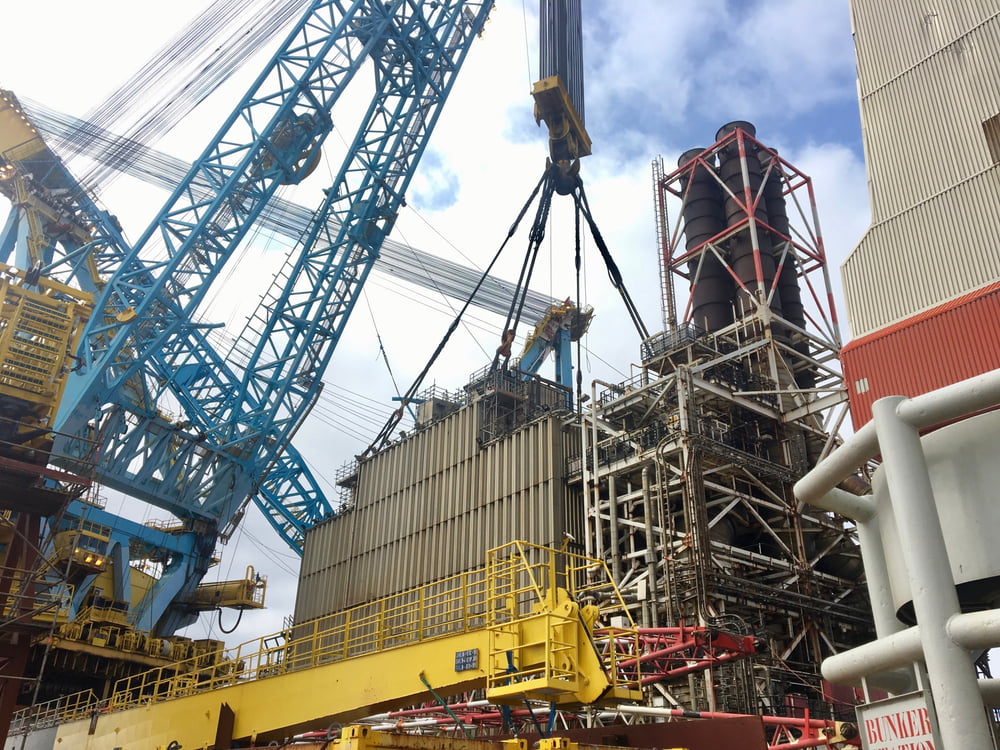Global investment in the decommissioning of oil and gas platforms has risen significantly in the last few years, with almost 100 assets set to be taken down between 2017 and 2030 (and over 150 between 2031 and 2040).
However, removing these large infrastructures from our seas can be complicated, time-consuming and create constantly changing obstructions in the water. These obstacles can pose risks for passing seafarers — if not adequately marked with marine aids to navigation (AtoN): the signals and markers used to steer ships and fishermen away from hazards out at sea.
Although AtoN will already exist at these sites from when they were first erected, these devices are rarely the most appropriate solution for the decommissioning stage — and this is where replacement aids come in.
So, what conditions must AtoN solutions contend with during decommissioning — and how can they support the effective management of these sites throughout the entire process?
What does decommissioning entail?
Decommissioning refers to dismantling and extracting oil and gas platforms that have reached the end of their commercial life, taking structures out of operation and returning their offshore locations to their natural, pre-installation condition.
During decommissioning, production and pipeline risers are cleaned and extracted. Wells, well casings and bottom-founded components at least 15 feet below the mud line are severed, and materials are discarded — though some debris may remain in and around the area.
Providing clear zone marking and visibility around these sites is crucial to ensuring safety — which is where AtoNsuch as lights, markers and navigation buoys come in.
But decades can pass before this process reaches completion, meaning pre-existing AtoN — most of which rely on sizeable power sources due to the requirements of large oil and gas platforms — will be left without adequate power and become too expensive to run.
It is also not uncommon for decommissioning structures and materials to sit on or below the water surface for years at a time. At this point, fixed AtoN will have nothing to attach to — rendering them unusable.
So, during this transitional period, project managers must deploy modern, flexible AtoN equipment to maintain safety zones. These new products can provide an efficient solution for highlighting hazards, reducing the risk of collisions and minimising the need for costly on-site maintenance.
How do you find the most appropriate AtoN?
As oil and gas platforms enter different stages of decommissioning, the requirements for AtoN change and old systems become obsolete. However, without the right advice, bringing them up to date all at once can be a significant undertaking…
Hydrosphere is all about balancing functionality with efficiency. We understand the obstacles to trading in this legacy equipment and specialise in providing low-power, cost-effective transitional solutions that can meet the practical needs of a site until it is completely stripped clear.
For example, when fixed structure lights are removed, solar-powered navigation lights can illuminate structures in harsh or foggy conditions — and offer better energy efficiency compared to existing lamps. These models can also offer significant savings in remote areas where conventional fuel-powered generators are expensive and impractical to deploy.
It is also vital to supply durable navigation buoys that can distinguish safe zones and help vessels avoid hazards that may lie beneath the surface in rough deep-water locations.
The Mobilis JET 9000 buoy is an ideal option for many applications, constructed around a galvanised steel central structure with medium-density polyethene (MDPE) hull floats and UV-stabilised components for superior resistance against strong waves.
With long lifespans and a three-metre hull diameter offering up to 9,000 kilograms of buoyancy, these versatile products can be deployed in offshore, deep-water and large river applications where high visibility is required.
Of course, the needs of every decommissioning project are different and often changeable. No matter the challenge, Hydrosphere has a broad range of high-quality solutions and the expertise to design a bespoke solution that will support safe, reliable operations at every stage.
To discuss how our oil and gas and renewable energy solutions can help secure your site, call +44 (0)1420 520374 or email sales@hydrosphere.co.uk.








